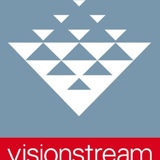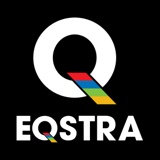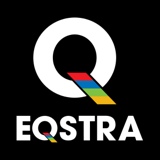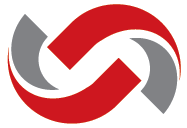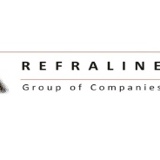Information
-
Audit Title
-
Document No. VS-HS-HSC-035 Issue 3
-
Project
-
Conducted on
-
Location
-
Project Manager
-
Regional Manager
-
Project Director
-
Opening meeting attendees:
-
Closing meeting attendees:
-
Comments:
-
Summary:
Leadership and Commitment
-
1.1 (SEQ) The current LCPL Group SHEQ Policy is displayed and communicated?
-
Comments:
-
Recommended Action:
-
By when?
-
Responsible Person:
-
1.2 (SE) Managers / Leaders are visiting operational and project sites and there are records of SHE Leadership Visit forms being completed?
-
Comments:
-
Recommended Action:
-
By when?
-
Responsible Person:
-
1.3 (SEQ) Objectives and targets have been developed, documented and approved as part of the Project Management <br>Plan and are monitored and reviewed regularly?
-
Comments:
-
Recommended Action:
-
By when?
-
Responsible Person:
-
1.4 (Q) Project Management Plan / Quality Plan is documented, clearly defines the scope of works and the interaction between processes in the system.
-
Comments:
-
Recommended Action:
-
By when?
-
Responsible Person:
Planning
-
2.1 (Q) Organisational structure is clearly defined, documented and communicated.
-
Comments:
-
Recommended Action:
-
By when?
-
Responsible Person:
-
2.2 (Q) Roles and responsibilities are clearly defined, documented and communicated.
-
Comments:
-
Recommended Action:
-
By when?
-
Responsible Person:
-
2.3 (Q) Delegation levels are clearly defined, documented and communicated.
-
Comments:
-
Recommended Action:
-
By when?
-
Responsible Person:
-
2.4 (SEQ) A Project Risk Register has been developed and is available in ARM.
-
Comments:
-
Recommended Action:
-
By when?
-
Responsible Person:
-
2.5 (SEQ) Project risks related to safety, environment, operations and commercial are identified, assessed and controlled appropriately.
-
Comments:
-
Recommended Action:
-
By when?
-
Responsible Person:
-
2.6 (SEQ) Legislation applicable to the works has been identified.
-
Comments:
-
Recommended Action:
-
By when?
-
Responsible Person:
-
2.7 (SE) Safety, Health and Environment Work Method Statements (SHEWMS) are developed, reviewed and approved prior to work commencing.
-
Comments:
-
Recommended Action:
-
By when?
-
Responsible Person:
-
2.8 (SEQ) Training and competency requirements for all employees and sub-contractors are identified and available.
-
Comments:
-
Recommended Action:
-
By when?
-
Responsible Person:
-
2.9 (SEQ) Induction and training records are available for al employees and sub-contractors.
-
Comments:
-
Recommended Action:
-
By when?
-
Responsible Person:
-
2.10 (SE) There is a dispute resolution process in place and this is known to employees and sob-contractors.
-
Comments:
-
Recommended Action:
-
By when?
-
Responsible Person:
-
2.11 (SE) Travel plans for each employee where driver alertness or fatigue is an issue have been developed, activated, monitored, acknowledged and closed out.
-
Comments:
-
Recommended Action:
-
By when?
-
Responsible Person:
-
2.12 (SE) Traffic Management plans are available and adequate.
-
Comments:
-
Recommended Action:
-
By when?
-
Responsible Person:
-
2.13 (SE) Potential emergencies have been identified and appropriate emergency response plans are n place.
-
Comments:
-
Recommended Action:
-
By when?
-
Responsible Person:
-
2.14 (SE) Emergency procedures are practised.
-
Comments:
-
Recommended Action:
-
By when?
-
Responsible Person:
-
2.15 (SE) Appropriate Fire Fighting Equipment is available and maintained.
-
Comments:
-
Recommended Action:
-
By when?
-
Responsible Person:
-
2.16 (Q) Specific infrastructure (workspace, tools & equipment, IT applications) requirements are identified and documented in Project Management Plan or equivalent.
-
Comments:
-
Recommended Action:
-
By when?
-
Responsible Person:
-
2.17 (Q) Customer requirements are captured and documented.
-
Comments:
-
Recommended Action:
-
By when?
-
Responsible Person:
-
2.18 (SEQ) Sub-contractor / supplier selection and engagement process is followed and Contractor Evaluation Forms are completed for all sub-contractors and sub-contractors of sub-contractors.
-
Comments:
-
Recommended Action:
-
By when?
-
Responsible Person:
-
2.19 (SE) Surveillance (i.e. inspections, audits) schedules have been developed based on contractor evaluations.
-
Comments:
-
Recommended Action:
-
By when?
-
Responsible Person:
Implementation
-
3.1 (SE) Toolbox meetings are held at least monthly.
-
Comments:
-
Recommended Action:
-
By when?
-
Responsible Person:
-
3.2 (SE) Affected community contacted prior to commencement of site works and/or high risk activities.
-
Comments:
-
Recommended Action:
-
By when?
-
Responsible Person:
-
3.3 (SE) There are records of first aid treatments and incident reporting.
-
Comments:
-
Recommended Action:
-
By when?
-
Responsible Person:
-
3.4 (SE) Design reviews are conducted and safety and environment risk is discussed.
-
Comments:
-
Recommended Action:
-
By when?
-
Responsible Person:
-
3.5 (SE) Daily pre-start meetings are held.
-
Comments:
-
Recommended Action:
-
By when?
-
Responsible Person:
-
3.6 (SE) Inspection and testing equipment is calibrated and records maintained.
-
Comments:
-
Recommended Action:
-
By when?
-
Responsible Person:
-
3.7 (Q) Plans and schedules for achieving objectives and targets are available, reviewed and communicated.
-
Comments:
-
Recommended Action:
-
By when?
-
Responsible Person:
-
3.8 (Q) Communication process is established and followed for customers, sub-contractors / suppliers and stakeholders (governmental agencies,councils, etc.).
-
Comments:
-
Recommended Action:
-
By when?
-
Responsible Person:
-
3.9 (Q) Contract rights and obligations are available, communicated and understood.
-
Comments:
-
Recommended Action:
-
By when?
-
Responsible Person:
-
3.10 (Q) Contract variation process in place and followed.
-
Comments:
-
Recommended Action:
-
By when?
-
Responsible Person:
-
3.11 (Q) Financial controls and reporting process in place and followed.
-
Comments:
-
Recommended Action:
-
By when?
-
Responsible Person:
-
3.12 (Q) Change management process is in place and followed.
-
Comments:
-
Recommended Action:
-
By when?
-
Responsible Person:
-
3.13 (Q) Design inputs and requirements are captured and records are maintained.
-
Comments:
-
Recommended Action:
-
By when?
-
Responsible Person:
-
3.14 (Q) Design review and verification process is available and followed.
-
Comments:
-
Recommended Action:
-
By when?
-
Responsible Person:
-
3.15 (Q) Design change process is available and followed.
-
Comments:
-
Recommended Action:
-
By when?
-
Responsible Person:
-
3.16 (Q) Design outputs are approved and meet the input requirements.
-
Comments:
-
Recommended Action:
-
By when?
-
Responsible Person:
-
3.17 (Q) Purchasing requirements are defined and documented.
-
Comments:
-
Recommended Action:
-
By when?
-
Responsible Person:
-
3.18 (Q) Purchased products is verified for conformity.
-
Comments:
-
Recommended Action:
-
By when?
-
Responsible Person:
-
3.19 (Q) End to end processes (construction, installation, maintenance, operations, service delivery, etc.) are clearly defined and documented in work instructions and operating procedures.
-
Comments:
-
Recommended Action:
-
By when?
-
Responsible Person:
-
3.20 (Q) Process control plans, hold points, inspections and test checklists are used for monitoring and measuring conformance to specifications.
-
Comments:
-
Recommended Action:
-
By when?
-
Responsible Person:
-
3.21 (Q) Document control process is available and followed.
-
Comments:
-
Recommended Action:
-
By when?
-
Responsible Person:
-
3.22 (Q) Control of records process is available and followed.
-
Comments:
-
Recommended Action:
-
By when?
-
Responsible Person:
Measurement and Evaluation
-
4.1 (SE) Incident Investigations are completed and records maintained.
-
Comments:
-
Recommended Action:
-
By when?
-
Responsible Person:
-
4.2 (SE) Regular Field SHE inspections are completed and records kept.
-
Comments:
-
Recommended Action:
-
By when?
-
Responsible Person:
-
4.3 (Q) Regular quality inspections are completed and records kept.
-
Comments:
-
Recommended Action:
-
By when?
-
Responsible Person:
-
4.4 (SEQ) Non-conformance and corrective action system in place and raised actions closed out.
-
Comments:
-
Recommended Action:
-
By when?
-
Responsible Person:
-
4.5 (Q) Process for monitoring and obtaining customer feedback is in place.
-
Comments:
-
Recommended Action:
-
By when?
-
Responsible Person:
-
4.6 (Q) Customer satisfaction data is analysed and performance targets are adjusted as required.
-
Comments:
-
Recommended Action:
-
By when?
-
Responsible Person:
-
4.7 (Q) Quality performance is monitored, documented and communicated.
-
Comments:
-
Recommended Action:
-
By when?
-
Responsible Person:
-
4.8 (Q) Client or external audit improvement opportunities are implemented.
-
Comments:
-
Recommended Action:
-
By when?
-
Responsible Person:
-
4.9 (SE) Control measures identified in incident investigations are implemented.
-
Comments:
-
Recommended Action:
-
By when?
-
Responsible Person:
-
4.10 (SEQ) Actions identified in project / toolbox meetings are completed.
-
Comments:
-
Recommended Action:
-
By when?
-
Responsible Person:
-
4.11 (SE) Has the project risk register (ARM), including safety and environment risk, been reviewed and updated?
-
Comments:
-
Recommended Action:
-
By when?
-
Responsible Person:
-
4.12 (SE) Is there a record of regional safety and environment performance being presented and discussed at both senior and field levels of the Business?
-
Comments:
-
Recommended Action:
-
By when?
-
Responsible Person:
Safety Essentials
-
5.1 (SE) Records are available showing staff and contractors have been trained in the Safety Essential requirements.
-
Comments:
-
Recommended Action:
-
By when?
-
Responsible Person:
-
5.2 (SE) Is there a Safety Essentials Audit Schedule for the region and have audits been completed as per this schedule by trained and competent auditors?
-
Comments:
-
Recommended Action:
-
By when?
-
Responsible Person:
-
5.3 (SE) Safety Essentials audit reports are available and audit results and actions have been entered into Cintellate.
-
Comments:
-
Recommended Action:
-
By when?
-
Responsible Person:
-
5.4 (SE) Audit actions resulting from Safety Essentials audits are closed out in the required timeframe.
-
Comments:
-
Recommended Action:
-
By when?
-
Responsible Person:
Site Verification
-
6.1 (SE) Emergency contact lists are easily accessible or displayed in a prominent location.
-
Comments:
-
Recommended Action:
-
By when?
-
Responsible Person:
-
6.2 (SE) Trained first aides are on site and appropriate for the site conditions.
-
Comments:
-
Recommended Action:
-
By when?
-
Responsible Person:
-
6.3 (SE) All works are being conducted in accordance with the SHEWMS and/or risk assessment / Take 5 records.
-
Comments:
-
Recommended Action:
-
By when?
-
Responsible Person:
-
6.4 (SE) Works are being conducted in accordance with traffic management plans and controls are implemented as per plan.
-
Comments:
-
Recommended Action:
-
By when?
-
Responsible Person:
-
6.5 (SE) Plant has appropriate and legible hazard signage.
-
Comments:
-
Recommended Action:
-
By when?
-
Responsible Person:
-
6.6 (SE) Daily plant inspections are completed.
-
Comments:
-
Recommended Action:
-
By when?
-
Responsible Person:
-
6.7 (SE) All sub-contractor mobile plant on site is inducted and assessed before use.
-
Comments:
-
Recommended Action:
-
By when?
-
Responsible Person:
-
6.8 (SE) Electrical testing and tagging conducted and register held.
-
Comments:
-
Recommended Action:
-
By when?
-
Responsible Person:
-
6.9 (SE) Lifting gear is tested and maintained and included in the register (Plant and Equipment Register).
-
Comments:
-
Recommended Action:
-
By when?
-
Responsible Person:
-
6.10 (SE) License and permits are current and have been inspected.
-
Comments:
-
Recommended Action:
-
By when?
-
Responsible Person:
-
6.11 (SE) There is a register of chemicals and MSDSs are available for chemicals stored and/or used on site.
-
Comments:
-
Recommended Action:
-
By when?
-
Responsible Person:
-
6.12 (SE) Chemical containers are adequately stored and labelled.
-
Comments:
-
Recommended Action:
-
By when?
-
Responsible Person:
-
6.13 (SE) Risk assessments have been conducted for Hazardous Substances and Dangerous Goods stored and/or used on site.
-
Comments:
-
Recommended Action:
-
By when?
-
Responsible Person:
-
6.14 (SE) Personal protective equipment is adequate and being used appropriately.
-
Comments:
-
Recommended Action:
-
By when?
-
Responsible Person:
-
6.15 (E) Noise and dust controls are in place to minimise impact on the environment and community.
-
Comments:
-
Recommended Action:
-
By when?
-
Responsible Person:
-
6.16 (E) Streams / storm water is protected from sediment load.
-
Comments:
-
Recommended Action:
-
By when?
-
Responsible Person:
-
6.17 (E) Vegetation / Heritage protection is in place as required by the Risk Register.
-
Comments:
-
Recommended Action:
-
By when?
-
Responsible Person:
-
6.18 (E) Buildings / stockpiles are established away from drip lines of trees.
-
Comments:
-
Recommended Action:
-
By when?
-
Responsible Person:
-
6.19 (E) Spill containment / control procedures are in place.
-
Comments:
-
Recommended Action:
-
By when?
-
Responsible Person:
-
6.20 (E) Fire management measures are in place as per Risk Register and SHEWMS.
-
Comments:
-
Recommended Action:
-
By when?
-
Responsible Person:
-
6.21 (E) Spread of any identified weeds / pathogens is controlled.
-
Comments:
-
Recommended Action:
-
By when?
-
Responsible Person:
-
6.22 (E) Records of appropriate disposal for controlled / prescribed wastes (asbestos, sewage, contaminated soils, chemicals etc.) are kept.
-
Comments:
-
Recommended Action:
-
By when?
-
Responsible Person:
-
6.23 (E) Housekeeping is adequate.
-
Comments:
-
Recommended Action:
-
By when?
-
Responsible Person:
Audit Sign-off
-
Auditor
-
Auditee
Notes
Definitions
-
AUDIT - Systematic, independent and documented process for obtaining evidence and evaluating it objectively to determine how well the audit criteria are fulfilled.
-
AUDITOR - Person who has undertaken a recognised Auditor's course either conducted internally or by a recognised External body, or person who possesses sufficient business experience and knowledge of AS/NZS ISO 9001, 14001 and/or 4801 to conduct an audit.
-
RECOMMENDED ACTION - Action to eliminate the cause of a detected non-conformity or other undesirable situation. In context of this audit, the meaning is to include action taken to rectify an identified deficiency (non-conformance or improvement opportunity), or action to prevent recurrence of a previous deficiency.
-
IMPROVEMENT OPPORTUNITY - Observations made which are provided as guidance on potential system improvement.
-
NON-CONFORMANCE - Non-fulfilment of a requirement. In the context of this audit checklist, the word "non-conformance" is used to describe conditions outside previously agreed, defined or specified requirements (including statutory requirements). It is a deficiency in documentation or procedures that reduces the quality of a material or service or introduces unacceptable risks to safety or the environment.
-
NOT APPLICABLE (N/A) - In some circumstances, the question may not be applicable to the works being audited. In this instance, N/A can be recorded against the criteria and the question and points available removed from the audit scoring process.
-
MAJOR NON-CONFORMANCE - In auditing terminology a major non-conformance indicates the absence of a system or part of the system, or that the documented systems or procedures are not being followed. A major non-conformance can be where there is an obvious and potentially threatening system discrepancy likely to expose people, the environment, or the company to high or extreme risk. Non-conformances identified as the primary cause of a significant incident, or a warranted customer complaint, are considered major. A major non-conformance may require immediate rectification if there is a threat to the environment, equipment or the safety of people.
-
PREVENTATIVE ACTION - Action taken to prevent possible occurrence of potential deficiency / adverse impact to the quality, safety and environment.
-
SYSTEM - Consists of the following elements; policy, procedures, safe work procedures, safe work instructions, environmental instructions, forms, checklists, templates, plans and tools.
-
KEY:
C = Conformance
IO = Improvement Opportunity
NC = Non-conformance
Mj NC = Major Non-conformance -
SCORING SYSTEM:
Conformance (C) = 10 points
Improvement Opportunity (IO) = 5 points
Non-conformance (NC) = 0 points
Major non-conformance (MjNC) = -5 points
